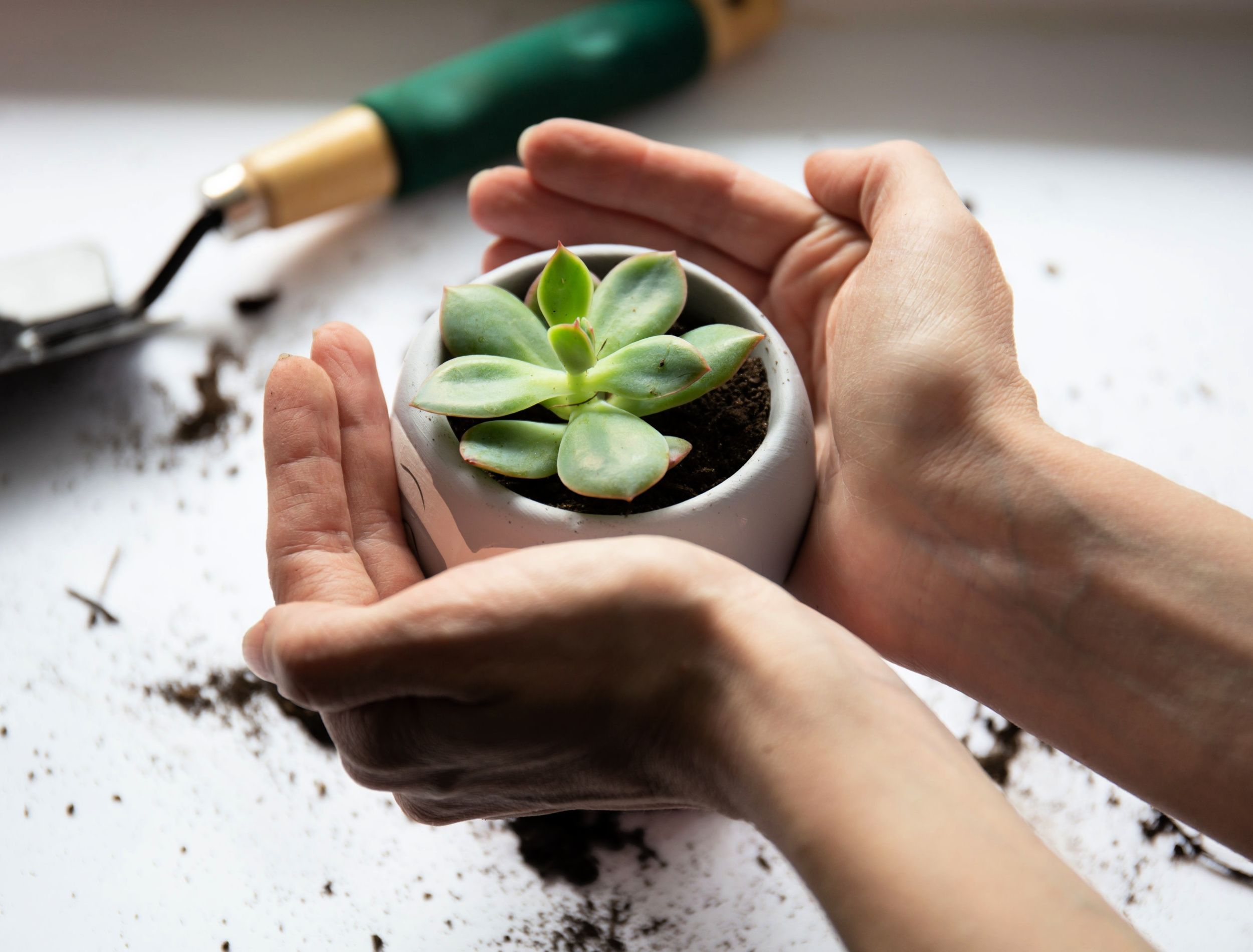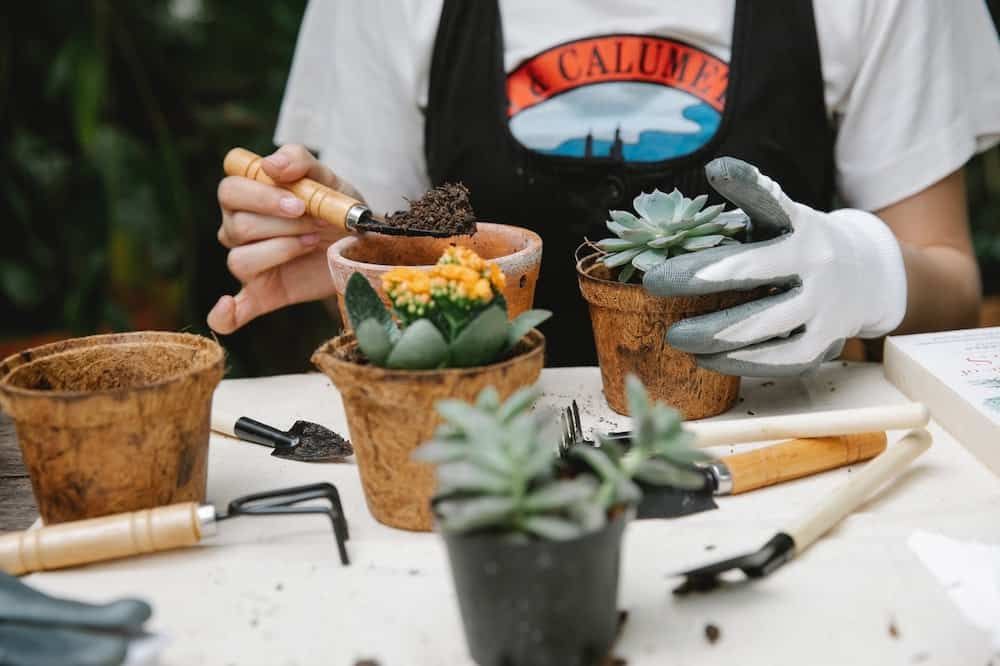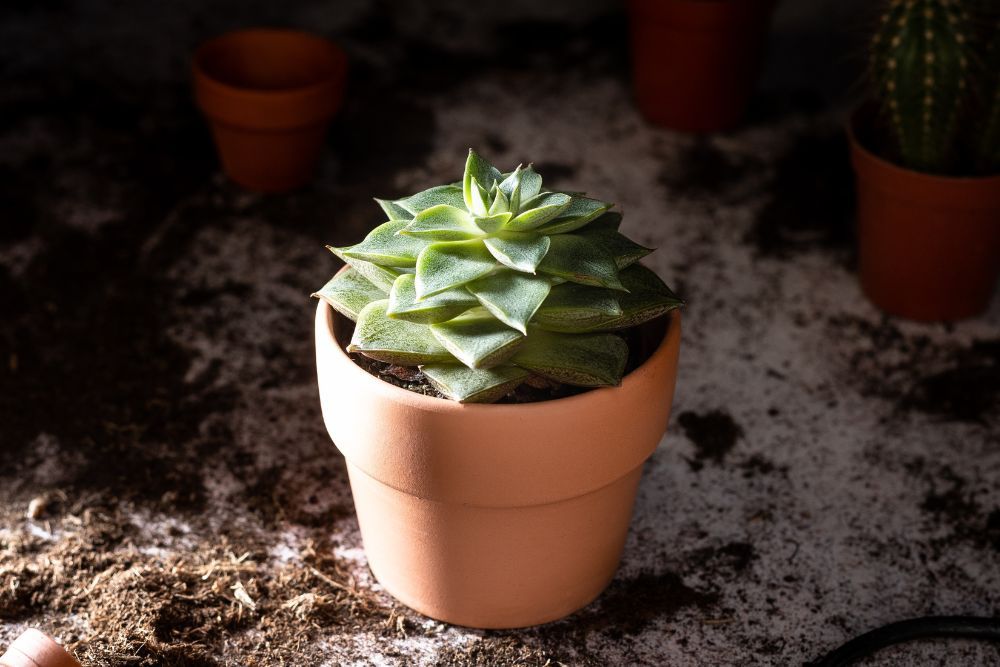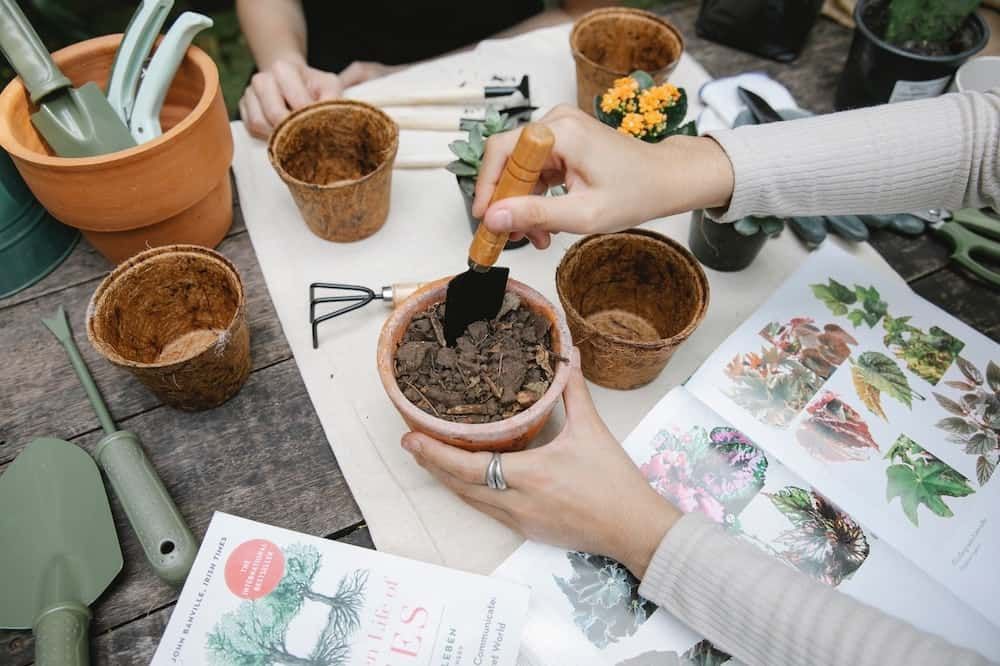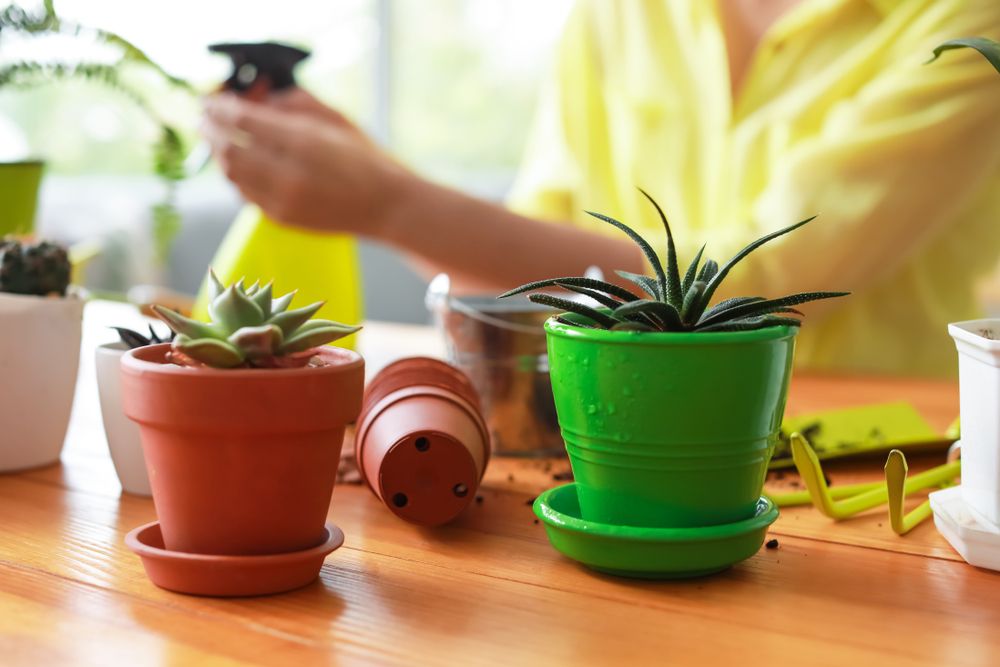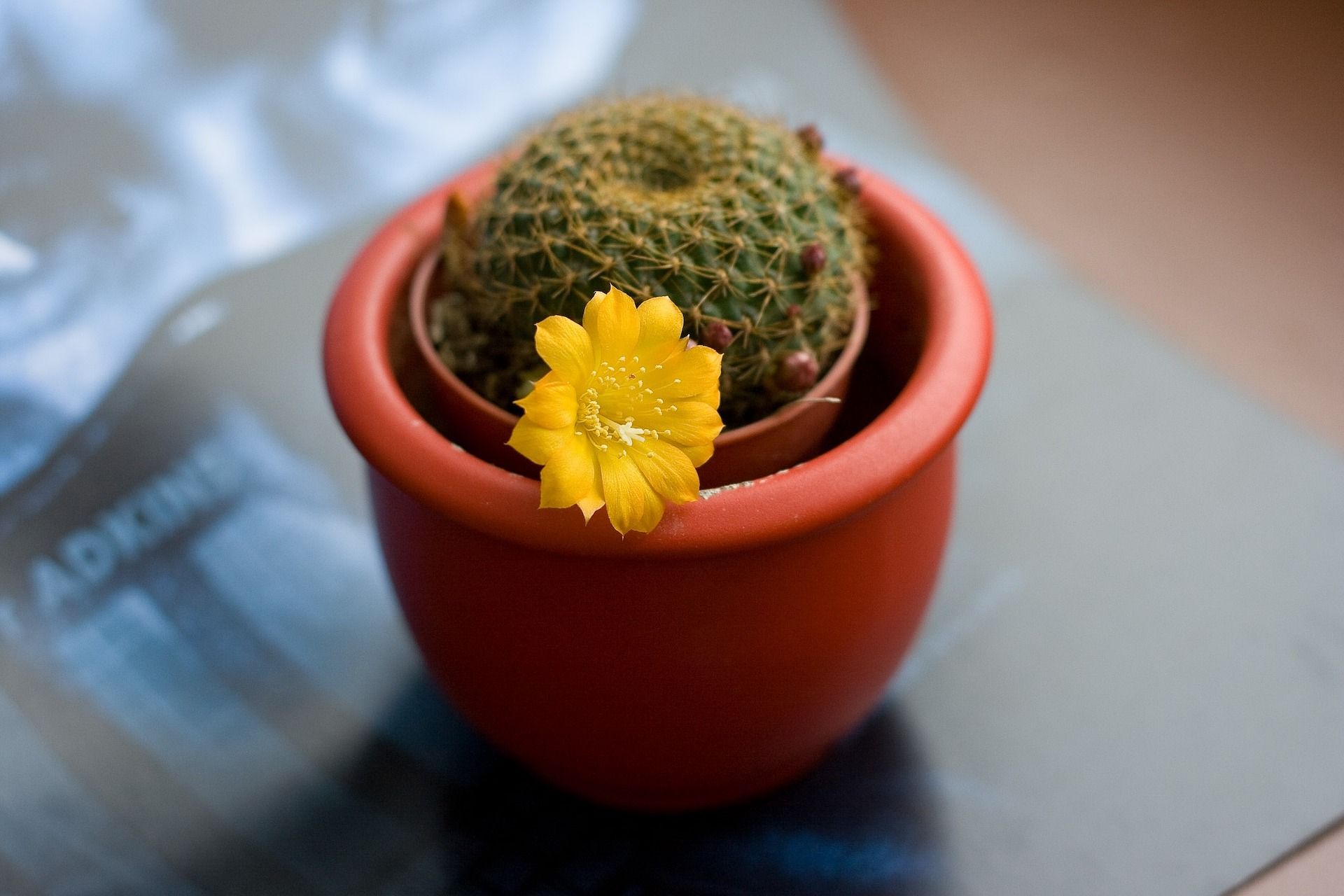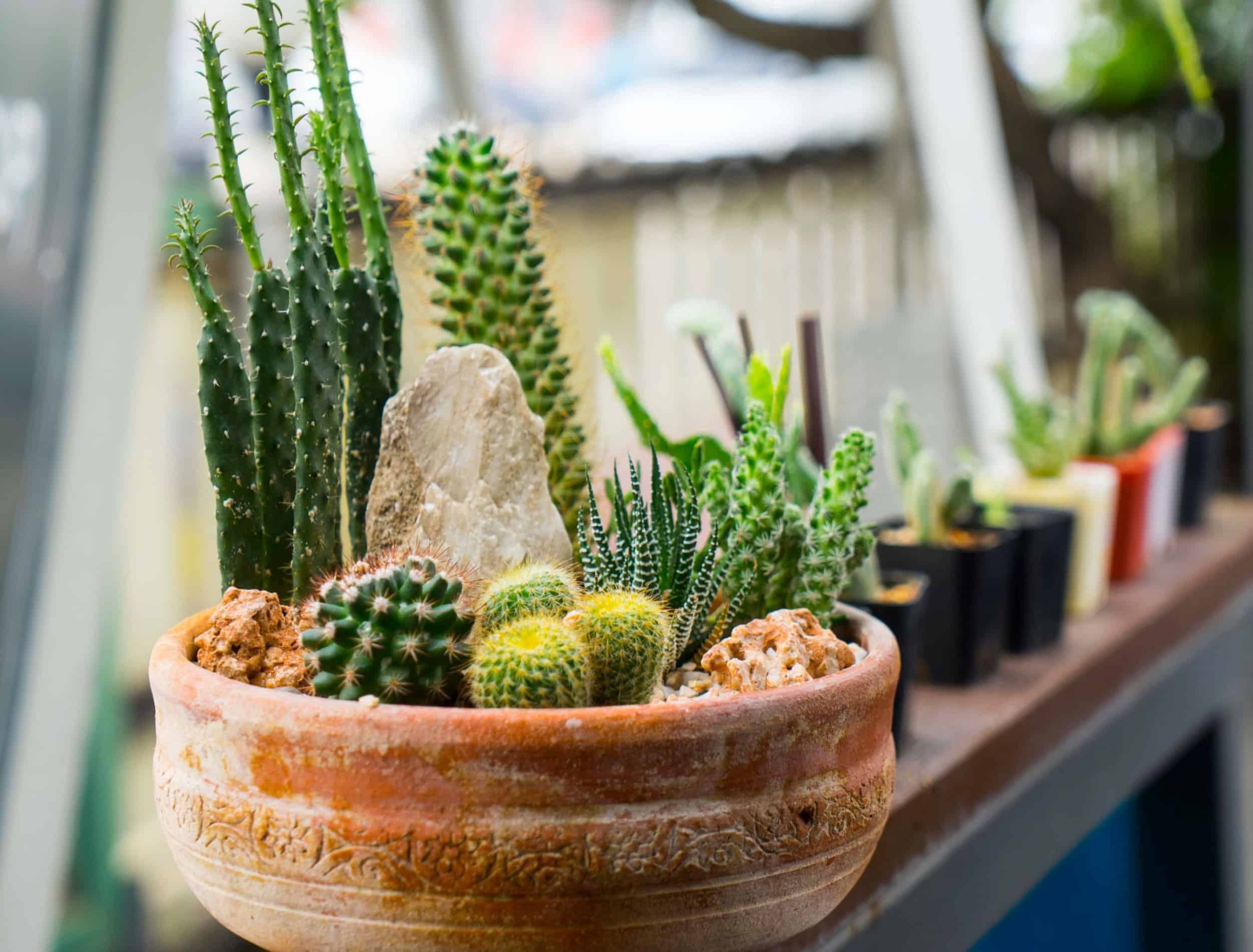Succulents are actually a broad group of plants belonging to several different botanical families. In general, succulents are plants with thick fleshy tissue that store water, such as jade, aloe, haworthia, kalanchoe, and more. Along with unique leaves and shapes, many succulents also flower -- when provided with the proper conditions, that is!
While succulents are generally known as a low-maintenance plants perfect for the forgetful home gardener, they still require care and attention. Because the category of succulents includes many different types of plants, it's necessary to know the recommended care for your specific variety. Still, there are general care rules that keep the plants happy and healthy.
Below, you'll find the top tips for growing and caring for succulents and the tools you'll need.
Tools You'll Need
Image credits: Gary Barnes via Pexels
To ensure you provide succulents with the proper care they need to thrive, there are a few tools you'll need. Check out the essentials below.
- Sunlight or grow light
- Pot with drainage
- Terrarium (optional)
- High-quality, well-drained soil
- Succulent fertilizer
- Clean, sharp knife
How to Grow Succulents
Now that you've gathered your materials, it's time to get planting. Here's how to do it.
Lighting
Image credits: micheile dot com via Unsplash
Proper lighting is one of the critical factors when it comes to growing succulents. Since these plants come from environments with plenty of sunlight, they generally require full sun to be happy. As a rule of thumb, they need at least six hours of sun each day.
Since succulents require a lot of light, a lack of it can result in flattened, stretched-out leaves or even a leaning plant as it tries to reach the light. Rotate the plant occasionally to ensure all sides get enough sun.
Opt for a grow light if you can't provide the succulent with enough sunshine. There are many different ones available, whether you want an entire setup or to simply add a special lightbulb to a nearby lamp!
Potting Media, Pots, and Fertilizer
Image credits: Gary Barnes via Pexels
Loose, well-draining soil with a sandy texture is ideal for succulents. Look for a succulent or cactus potting mix, or make your own with perlite or pumice, which absorb moisture.
Unglazed clay and terracotta pots are excellent for planting since the materials absorb excess wetness. Ensure the container has drainage to avoid overwatering and stop the roots from sitting in water or damp soil. You can also plant succulents in terrariums for a unique display.
Succulents don't require frequent fertilizing, but the added nutrients are beneficial. As a general rule, fertilize in the spring before the growing season. Either use a diluted fertilizer to avoid damaging the plant or opt for a fertilizer specifically designed for succulents.
Watering
Image credits: Pixel-Shot via Shutterstock
Succulents are native to hot, arid environments, which is why they have adapted to storing large amounts of water in their foliage. This makes them drought-resistant but also prone to overwatering. How often you water depends on the environment and the time of year.
The low-light conditions of fall and winter and the fact that the plants don't actively grow in cool weather means succulents don't require frequent watering then. Conversely, while the plants are growing during the hot and dry summer, you should water them more often.
Pro Tip: If you notice wrinkling leaves and dry soil, it's time to water. If the soil is moist and the leaves are yellow, falling off, or translucent, you've likely overwatered your plant. Always allow your succulent to dry out between waterings, and ensure you give it a thorough drink when you do water.
Temperature and Humidity
Image credits: labenord via Pixabay
Succulents prefer daytime temperatures of 60 to 75 degrees Fahrenheit and nighttime temperatures of around 40 to 60 degrees Fahrenheit. A 10-degree difference from day to night encourages succulents to prosper. Provide the plants some afternoon shade if temperatures go above 80 degrees Fahrenheit.
These plants do well with humidity levels between 40 to 60 percent. Avoid keeping succulents in high-humidity locations, such as the bathroom, as too much moisture can result in rot, wilting, and death. Succulents can combat high humidity of around 80 percent if they get a lot of sunlight during the day.
General Maintenance
Image credits: Nokwan007 via Shutterstock
As with all plants, keep an eye out for pests such as gnats, aphids, or mealybugs, which are usually a result of overwatering. Also, isolate new plants and frequently inspect your collection to avoid an infestation.
When it comes to general maintenance, regularly remove any dying or rotting leaves with a clean, sharp knife. Dead foliage can harbor fungus and disease. Since succulents don't do well in cool weather, bring any outdoor plants indoors for the winter. Be sure to complete this chore before the first expected frost. Then, care for them as indoor plants following the recommendations outlined above!
Pro Tip: You can easily propagate many succulents from stem or leaf cuttings. Allow the cutting to dry out a bit, and then place it into clean, moist sand or soil. Once the plant develops roots, transplant it into a new container.
Fun Fact: Cacti are technically a succulent, but they are placed in a separate category: Cactaceae. That's because cacti don't usually have leaves but instead have stems in the shape of cylinders or pads with sharp spines or bristles that protect them from wildlife. Cacti are succulents, but not all succulents are cacti.
Suc-cute-lent!
While tropical plants are beautiful, succulents are just as fun and rewarding to grow. With the proper lighting, watering, and general care, you can provide the right conditions to see beautiful blooms and new growth. The plants are perfect for a home gardener who sometimes forgets to water, but they do require plenty of sunlight.
Do you have any tips for caring for succulents? Share in the comments below!

